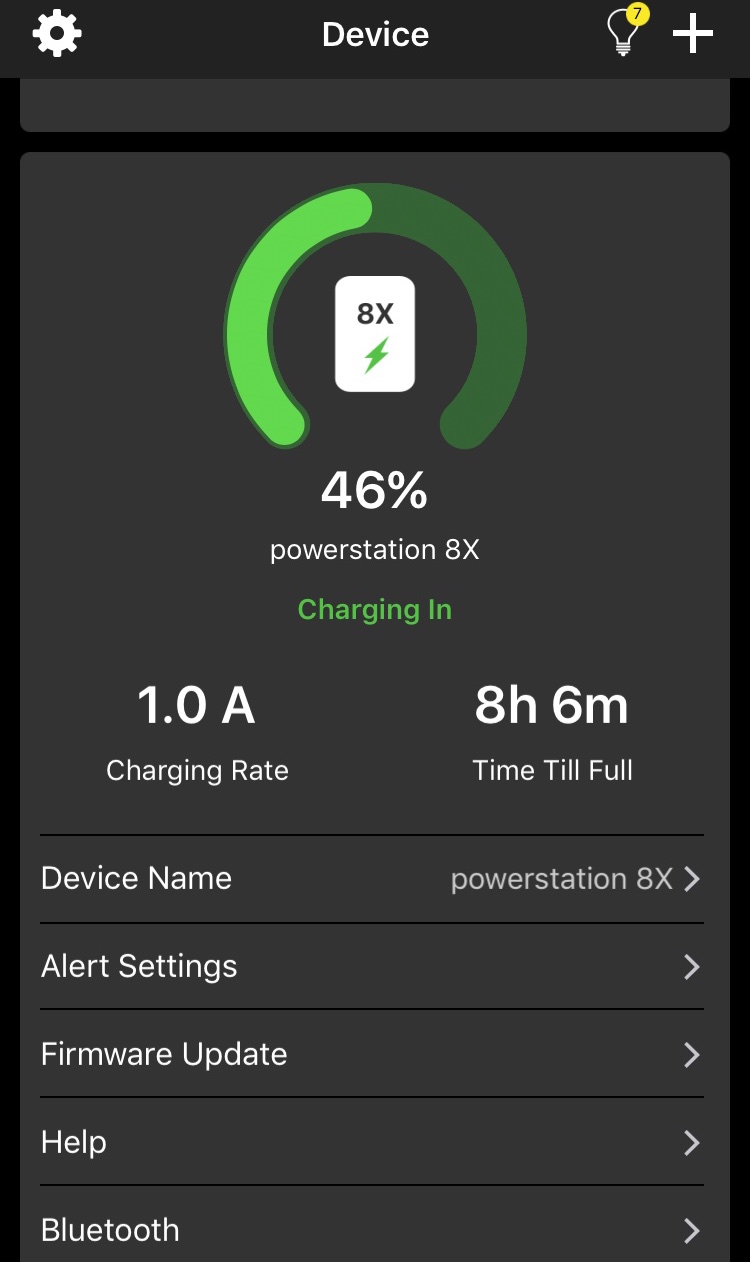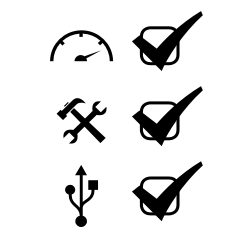Smartphones are incredibly useful, when they’re charged that is. Too often our phones run out of juice when we’re out and about, seemingly when we need them the most. Luckily portable battery packs offer power for our devices on the go, or even at home when plugging them into an outlet isn’t a viable option.
Typically, portable battery packs offer between 3,000 and 5,000 mAh worth of battery life, which should charge your iPhone completely with some extra juice to spare. Not too shabby if you need to give your iPhone a boost in an emergency situation. But what if you need to charge a device larger than an iPhone? What if you’re going off the grid and need to ensure your phone can be charged multiple times? What if you need to charge two devices at once?
Enter the Mophie Powerstation 8X, which intends to solve all of those problems and more – but before I give away too much information in the introduction, let’s move on to first impressions.
First Impressions
The Mophie Powerstation 8X’s packaging promises the battery is able to charge a ‘large tablet’ one and a half times, a ‘small tablet’ three times, a ‘smartphone’ eight and a half times, or a wireless speaker seven and a half times (but not consecutively of course).

The device is compact, but sturdy, and its aluminum body mimics the style of the iPhone 6s and iPhone 7’s chassis. So while the battery pack itself is slim and sleek, it still manages to pack a ton of juice.

Its 15,000-mAh capacity holds roughly twice the amount of power as a MacBook Air, and theoretically you should be able to fully charge an iPhone 7 seven and a half times on a single charge from the Powerstation.

On the right side of the device you’ll see a MacBook inspired power indicator button, which also doubles as a Bluetooth pairing button (more on that later). Next to the power indicator button, you’ll see four power indicator lights, which allow you to quickly view the power status of your battery, as well as if the Powerstation is successfully charging.
On the top-end of the Powerstation, you’ll find a Micro-USB port (charge input), as well as two USB-A ports (charge output).

Beyond the Powerstation 8X itself, you’ll find one 9-inch USB-A to Micro-USB charging cable, and a user manual included in the box. The user manual is loaded with information in multiple languages including English, Italian, French, German, Portuguese, Russian, Japanese, Korean, and more; making it easy for virtually anyone to pick up, understand, and use.
Features
Dual-USB Ports with 15W Fast Charge
More than likely, this battery will be used to charge more devices than just your iPhone, and because the device holds so much power, Mophie has added a second USB port to charge two devices at once.

The first USB power-output port on the top of the device features a green inset, and is marked by a green lightning symbol. This particular port is compatible with 15W Fast Charge devices. Devices that have Qualcomm® Quick Charge™ 2.0 capabilities or Samsung Adaptive Fast Charging capabilities will charge up to 75% faster from this particular USB port than they will from a typical smartphone charger.
Bluetooth / Companion App
You’ll also be treated to the free Mophie Power app (downloadable from the App Store), which allows you to see battery statistics about the Powerstation as well as information about your iPhone’s battery.

A green semi-circle will display the amount of battery life remaining on both devices, as well as percentage indicators for exact amounts. Beneath those figures, the Mophie Power app provides more detailed statistics like the device’s charging rate and the time remaining until it’s fully charged.
The app also provides users with push notifications to alert them when the device is finished charging, as well as a notification to inform users when the Powerstation’s battery is low (10%). The low-battery warning can even be customized to your liking, from 10% all the way up to 90% remaining.
Priority+ Charging
Priority+ Charging allows your devices to charge first while they’re connected to the Powerstation that’s also plugged in to charge. Basically, when your devices (priority) are finished charging, the Powerstation will then begin to charge itself. This feature allows you to essentially “set it and forget it.”
Trusted Manufacturer
Mophie is based in California, has been in business since 2005, and is a highly trusted manufacturer of battery-related devices . The brand is certainly reputable, which is important when considering a battery pack to purchase. Less-expensive, off-brand battery products are not usually recommended because of their inherent low-quality standards – those devices ultimately pose a higher risk of combustion. Mophie details three ways in which their products, specifically, can offer peace of mind.
Triple Test Certified

“Every Mophie battery product is tested at three different stages of production to ensure an unmatched capacity, efficiency and build quality along with reliable, long-lasting performance.”
Digital Power Management

“Smart charging circuitry communicates with your device to determine the perfect amount of power in order to deliver a safe charge at the quickest speeds possible.”
Charge Vault Technology

“Industry-leading battery life enables our products to hold their charge for an extended period of time, making them more reliable than other battery cases in the market.”
Final Thoughts
While I wasn’t able to test its Quick Charge capabilities, I can attest that it lives up to its promises for charging other devices (without Quick Charge), like the iPhone 7. Throughout testing, I was able to completely discharge and recharge my iPhone 7 with the Powerstation 8X, seven times – which was spot on with my original estimate.
The Mophie Powerstation’s companion app allowed me to keep an eye on its battery life, charge rate, and more. It’s an added bonus that’s not completely necessary considering the Powerstation features a battery indicator on the device itself, but it’s a fantastic addition for those who would like to monitor the Powerstation’s stats more closely.
While Powerstation 8X is great for keeping your devices alive on the go, it’s important to note this small-but-mighty battery pack takes a while to charge. To fully charge the device using a standard wall adapter, it will take anywhere between 12-14 hours. In testing, my demo unit took a lengthy 13 hours to charge completely.
Although the Powerstation takes a while to charge, that isn’t the fault of the device or the manufacturer; it’s simply a limitation of battery technology in general. So if you’re planning to use the Powerstation the following day, just make sure to plug it in a few hours before you head to bed for the evening.
With that being said, there isn’t a single fair reason I wouldn’t recommend the Mophie Powerstation 8X.
With the Powerstation 8X, users can charge an iPhone 7 over and over again, charge two devices at once, and even manage their power with its dedicated app. The battery capacity and features that Mophie managed to pack in such a reasonably-sized and stylish package is incredible. Put simply, a device like this is a blessing for long excursions away from home, and the ability to charge two devices at once ensures no one in the family will be left without power. The Mophie Powerstation 8X is available here for only $79.95, that’s 46% off its original retail value.
Want a FREE iPhone 7? Click here to enter our monthly contest for a chance!
Follow us on Apple News by pressing the (+) button at the top of our channel

from iDrop News http://ift.tt/2uE1tRA
via
IFTTT